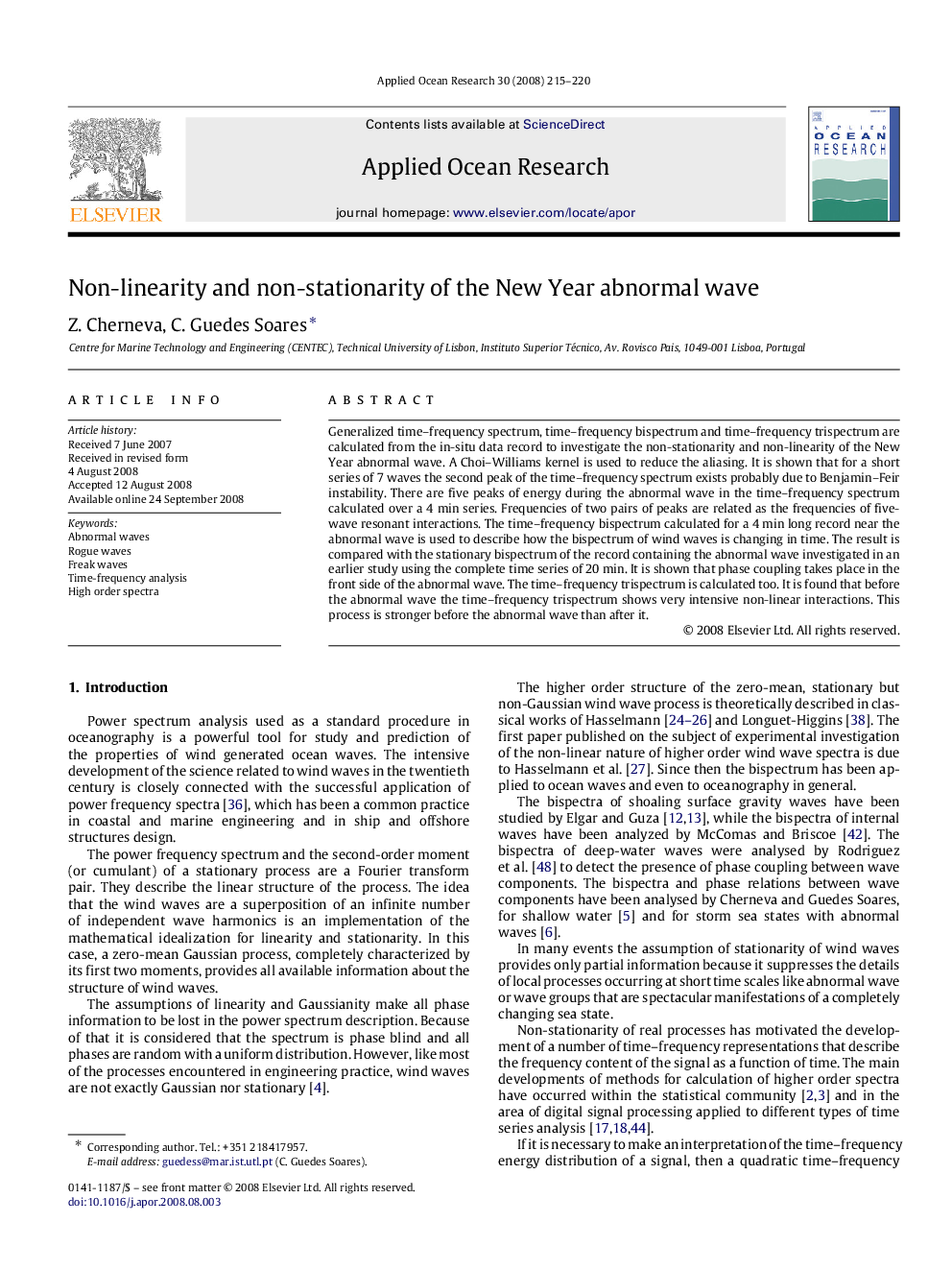| Article ID | Journal | Published Year | Pages | File Type |
|---|---|---|---|---|
| 1720402 | Applied Ocean Research | 2008 | 6 Pages |
Generalized time–frequency spectrum, time–frequency bispectrum and time–frequency trispectrum are calculated from the in-situ data record to investigate the non-stationarity and non-linearity of the New Year abnormal wave. A Choi–Williams kernel is used to reduce the aliasing. It is shown that for a short series of 7 waves the second peak of the time–frequency spectrum exists probably due to Benjamin–Feir instability. There are five peaks of energy during the abnormal wave in the time–frequency spectrum calculated over a 4 min series. Frequencies of two pairs of peaks are related as the frequencies of five-wave resonant interactions. The time–frequency bispectrum calculated for a 4 min long record near the abnormal wave is used to describe how the bispectrum of wind waves is changing in time. The result is compared with the stationary bispectrum of the record containing the abnormal wave investigated in an earlier study using the complete time series of 20 min. It is shown that phase coupling takes place in the front side of the abnormal wave. The time–frequency trispectrum is calculated too. It is found that before the abnormal wave the time–frequency trispectrum shows very intensive non-linear interactions. This process is stronger before the abnormal wave than after it.
